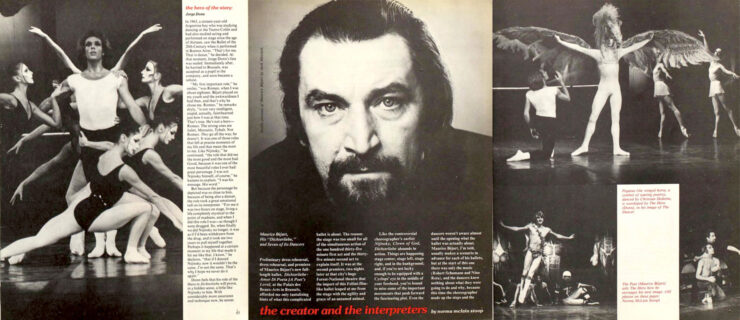A Clean Sweep
For the last 15 years, the stage at the Orpheum Theatre in New York City has undergone abuse unlike any other. Home to the hard-hitting percussive show Stomp, it gets a rigorous beating night after night. The cast uses broomsticks, pots and pans, garbage cans, and even kitchen sinks to pound out rhythms and entrance the audience.
No wonder floor care poses a big headache for stage manager Paul Botchis. “The brooms and poles being jammed into the floor as hard as possible are two of the worst offenders,” he says, “followed by the soft shoe number that is done sliding around on sand.” The result: Entire sections of the floor need replacing every two or three weeks.
Luckily most dance studio owners don’t face quite the same maintenance challenges as Botchis. Nevertheless, proper flooring and maintenance make a big difference in protecting dancers as well as in a floor’s longevity. Ballet, modern, tap, and jazz get taught today on PVC (poly-vinyl chloride), a type of vinyl commonly referred to as “marley,” and made from a similar synthetic base. For many years wood was considered the ideal surface for most types of dance. Now wood primarily gets used in tap, and some ballet studios. “While it’s durable,” says Rosco Laboratories floor product manager Caroline Rault, “it requires more expensive care, like periodic sanding and refinishing.”
A studio’s clientele dictates the flooring options. Two of the ten studios at New York’s Steps on Broadway, for instance, have wood floors for their tap and flamenco classes. “It’s all about providing the proper sound for the dancers,” says director of marketing Patricia Klausner.
Marley floors have been designed for multipurpose use in recent years, allowing studios to hold jazz, modern, and ballet classes in the same space at difference times of day. Vinyl needs proper upkeep, however, or it can create problems. Dirty floors become slippery, says American Harlequin marketing manager Claire Londress, who advises mopping with a neutral pH cleaner every week, and then going over the area again with water to pick up any residue.
Sometimes more care is needed. “If it’s humid, the dancers’ perspiration evaporates into the air, warming up the room,” says Stagestep president Randy Swartz. “When the air cools, it can’t hold the moisture. This accumulates on the surface of the floor. If it’s where dust has collected, it creates microscopic mud and results in a slippery surface.” Swartz recommends that studio floors be dry- mopped before class, then a dehumidifier used overnight.
Each studio needs to develop a regular maintenance routine, Swartz says, that reflects the type of dance they offer and the level of student traffic. He recommends a standard three-step cleaning regimen to protect and extend a floor’s life. Once a day, he says, it should be cleaned with a dry mop. Once a week it should be cleaned with a wet mop using a detergent degreaser. Then every three months the surface should receive a deep cleaning with a floor cleaning machine (the Oreck Orbiter is a popular brand you can rent or buy) using a fine scrubbing pad and a special solvent made specifically to deal with resin, scuff marks, and adhesive residue. Depending on the finish, once every six months to two years the floor should be completely stripped, and the finish reapplied.
He also recommends avoiding cleaners with acetone, ammonia, and alcohol. They can melt, dissolve, crack, or dry out the floor. While vinegar and bleach will clean, they too can damage the surface. And household detergents such as Spic ’n’ Span and Swiffer leave behind a residue.
With 10 different dance floors to maintain, Steps on Broadway’s Klausner offers good advice. “Each type of surface requires its own daily maintenance. Our marley floors are swept and washed daily with water and a very mild detergent. Once or twice a week we use a buffer with a fine pad. The maplewood floors are washed with a lightly dampened mop and Murphy’s Oil Cleaner. Once a year tung oil is massaged into the wood with lamb’s wool.”
Londress points out that good floor maintenance includes avoiding problems as well as removing them. She recommends that studios adopt a “No street shoes” rule. “Dirt and gravel can do lots of damage,” she says. “Not to mention spike heels.” Remind the dancers that they protect themselves when they protect the floor. “Cleaner,” she says, “means safer.”
Janice Barringer, is a ballet teacher and author of
The Pointe Book, published by Princeton Book Company.
Photo by Steve McNicholas, courtesy of Stomp.




